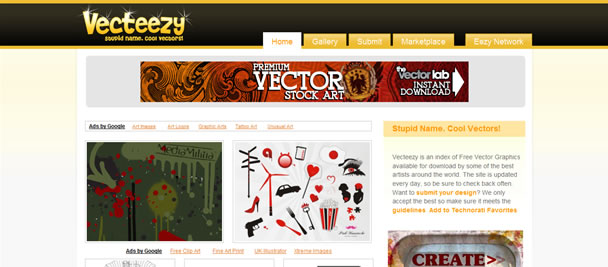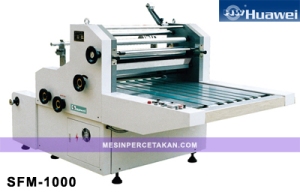Metallic ink is more challenging for the press operator to control than conventional ink. One reason for this is that the metallic powder blended into the ink mixture cannot be ground as fine as other pigments because the metallic ink will lose its luster. The larger particles create problems on the press, especially with the offset lithography process. To overcome some of the special print problems, some printers do a double hit (running the piece through the press a second time to apply another coat of ink to strengthen the coverage).
Most printers require an upcharge for the use of metallic ink on an application because the ink is more expensive to produce and makes the print job more time consuming. Metallic ink tends to have a much shorter shelf life than standard ink.
Magnetic ink Magnetic ink is comprised of a petroleum-base ink blended with magnetic iron oxide particles. The magnetic iron oxide particles allow documents printed with this type of ink to be read and sorted by electronic scanning equipment. Checks are an example of a document printed with magnetic ink. The MICR (Magnetic Ink Character Recognition) number at the bottom of the check is the only portion of the check printed with the magnetic ink. The remaining copy on the check is printed with standard ink to ensure that no other printed area on the check interferes with the ability of the scanner to read the magnetic MICR number.
Non-porous Ink Non-porous ink is used for printing on substrates, such as metal or plastic, that do not allow ink to be absorbed into the material. Because the printing surface of these materials is nonabsorbent, the ink dries solely through oxidation rather than absorption.
Fluorescent InkFluorescent is another type of ink that can provide a distinctive look for a variety of print applications. Fluorescent ink colors are most often printed on labels, posters, and signs that are used for alerting people to hazards or attracting their attention to advertising pieces.
There are several points to consider when using fluorescent colors. The ink tends to fade quickly, so they should be kept out of direct sunlight. Because of their tendency to fade, fluorescent inks have a short shelf life. Another point to consider is that fluorescent ink is very transparent, so it may require a double hit (a second run through the press) in order to achieve the desired results. In spite of this potential problem, fluorescent ink is a good choice for creating emphasis and increased visibility.
Phosphorescent Ink Applications printed with phosphorescent inks acquire a "glow in the dark" property after the phosphorescent area has been exposed to light. The length of time that an application will glow in the dark depends upon the ink ingredients and the length of time that the application is exposed to light. In some cases, a 10-30 minute exposure to light can yield an afterglow of up to 12 hours. The ingredients of phosphorescent ink are nontoxic and are free of radioactive additives. It is very useful for road signs, sporting goods, exit signs, safety products, toys, and novelty items.
Pearlescent InkPearlescent ink is a specialty ink that is used to add highlights and depth to the printed area of an application. It is able to provide an almost 3-dimensional effect to some applications.
Edible InkEdible ink is used on print applications that may come into contact with food or the ink may be part of the food product and therefore it must be made of totally nontoxic ingredients. An example where edible inks are used would be in the monogramming found on some confectionery items. Because the inks are used on food items, they are strictly regulated by the government.
Scratch and Sniff Ink Also known as a microencapsulated ink, scratch and sniff ink releases a fragrance when the microcapsules are broken. The scratch and sniff ink is commonly used in magazines for perfume advertisements. When the consumer scratches the surface of the designated area of the ad, the capsules are broken, releasing the fragrance.
Medical Device Ink Ink used for printing on medical devices is made of nontoxic ingredients so that direct printing on noninvasive surgical and medical disposable items is possible.
Moisture Resistant Ink Moisture resistant ink is most often used for different types of packaging or for applications that may be used outdoors.
Security InkThere are a variety of inks that provide added security features to print applications. Some security inks allow documents to be created that are tamper proof, while the use of other types of security inks prevent documents from being copied. Security inks include the following varieties:
Coin Reactive, Bleeding, Erasable, Heat Reactive, Visible Infrared, Optically Variable, Pen Reactive, Penetrating, Photochromic, Solvent/Chemical Reactive, Thermochromic, Water Fugitive, UV Invisible Fluorescent
Desensitizing Ink Desensitizing ink is a transparent ink that is applied to the face of CF (Coated Front) and/or CFB (Coated Front and Back) carbonless paper in order to deactivate the CF coating. The use of desensitizing ink is important when an application requires that handwritten or imprinted data not be transferred through the various pages of a carbonless form in specific areas.
Electronic InkElectronic ink can be transformed from bright white to dark and then back to bright white again with a small electrical charge. The ink consists of plastic microcapsules that contain both dark dye and white ink chips. The microcapsules are sandwiched between thin layers of flexible material, which substitutes for traditional paper. When an electrical charge is applied, some of the white chips float to the top of some capsules to create a white surface and in other capsules, the white chips remain at the bottom allowing the dark fluid to remain visible.
More...





